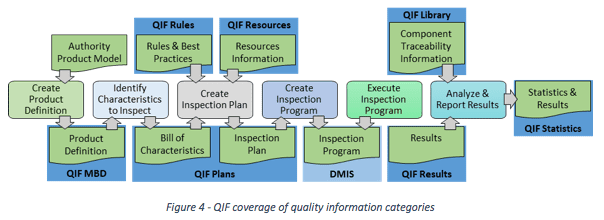
Driving New Value and Innovation with QIF
By: Dimensional Metrology Standards Consortium/DMSC
Date: March 12, 2018
The term “digital transformation” is used in business to describe the use of digital technology to radically improve the performance or reach of enterprises. It is, at its core, about process digitization and the strategic use of information to drive new value.
QIF (the Quality Information Framework) is an open ANSI standard for manufacturing, designed to support the digital transformation of quality inspection. QIF is a major step forward in enabling fully-digital quality inspection processes, and in supporting the strategic use of quality information throughout the enterprise and the product development process.
In this paper, we will cover:
Fundamental Challenge
Enabling Digital Quality
Digitizing Product Definition
Communicating Via the Digital Thread
Exploiting the Digital Twin
Designed for Openness
How to Get Started
Glossary of Terms
Fundamental Challenge
The fundamental challenge in transforming quality inspection into a fully digital process is interoperability.[1] While interoperability is often thought of as merely the ability to exchange computer processable data between different components of a system, in the case of quality inspection, this is not enough. It must be possible for data to flow seamlessly into, through, and out of the system.
If you look at a quality inspection system from a high-level perspective, it can be thought of as supporting four major activities, each implemented as a number of components:
[1] The concepts of quality inspection, and dimensional metrology (synonymous with dimensional inspection) are closely related.
